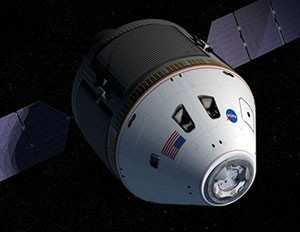Researchers Say Personalized Medicine Will Transform Human Space Flight
Significant attention has been given to methods of shielding human space participants from radiation on missions. But what if some astronauts suffer from susceptible DNA before entering the space radiation environment? Two American scientists have proposed that certain astronaut molecular profiles may 1) reduce inherent DNA stability, 2) slow DNA repair, and 3) render DNA more susceptible to mutational events when exposed to the radiation of space.

Michael A. Schmidt, Ph.D. (Sovaris Aerospace) and Thomas J. Goodwin, Ph.D. (NASA Johnson Space Center) have identified a novel approach to space radiation countermeasures, which is based on understanding the DNA stability, DNA repair capability, and oxidative susceptibility of individual astronauts before they enter the space environment. This methodology is linked to individual genotype and micronutrient status, both of which are potentially modifiable by appropriate pre-flight and in-flight countermeasures.
For instance, common gene mutations affecting one carbon metabolism (MTHFR, MTR, MTRR) may result in the build-up of a faulty base (uracil) within the DNA backbone. This can lead to single strand DNA breaks and double strand DNA breaks, before astronauts enter space. The effect of this is amplified by folate and B12 deficiency.
Other common gene mutations (Hfe) trigger excessive iron accumulation, which creates unstable DNA through oxidative stress mechanisms, also before entering space. Magnesium is a central atom in most DNA repair enzymes. Significant serum, urine, and muscle loss of Mg has already been found in ISS astronauts on long missions, thus raising the question about whether we are already flying some astronauts with diminished capacity to repair DNA damage.
According to Schmidt, "We are examining how individual molecular influences affect DNA stability and repair before astronauts enter the elevated radiation conditions of space, and then how to manage those influences while they live in space. But we are looking well beyond DNA and into the vast network of molecular influences on astronaut physiology. We and our colleagues are using genomics, transcriptomics, proteomics, and metabolomics to develop a platform for personalized medicine that will guide the present and future of human space flight. As the field evolves, we expect to increasingly be able to individualize countermeasures, so that each astronaut receives the protocol that is most suitable to him or her. This will be crucial for missions to the Moon, Mars, and beyond. Of equal importance, we use what we've learned from the complexity of space to translate these benefits to earth-based medicine."

Goodwin states, "In the end, it is about advancing the science and about developing solutions, which we see evolving in phases. Our goal, at minimum, includes: (1) establish the criteria for 'best evidence' that can be used to develop individualized countermeasures today; (2) establish the criteria for best evidence that prioritizes research, clinical assessment, and individualized countermeasures to be developed in the near term; and (3) establish a deliberate discovery path that seeks to develop sophisticated and more complex models for long-term deployment of personalized medicine, as the future standard of preparation and care in human space flight."
Their paper, entitled Personalized Medicine in Human Space Flight: Using Omics Based Analyses to Develop Individualized Countermeasures that Enhance Astronaut Safety and Performance, was recently published in the journal Metabolomics.
 SpaceX to Launch Inversion RAY Reentry Vehicle in Fall
SpaceX to Launch Inversion RAY Reentry Vehicle in Fall Aero-News: Quote of the Day (04.23.24)
Aero-News: Quote of the Day (04.23.24) Aero-News: Quote of the Day (04.20.24)
Aero-News: Quote of the Day (04.20.24) ANN's Daily Aero-Linx (04.20.24)
ANN's Daily Aero-Linx (04.20.24) Aero-News: Quote of the Day (04.21.24)
Aero-News: Quote of the Day (04.21.24)




